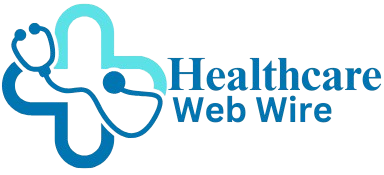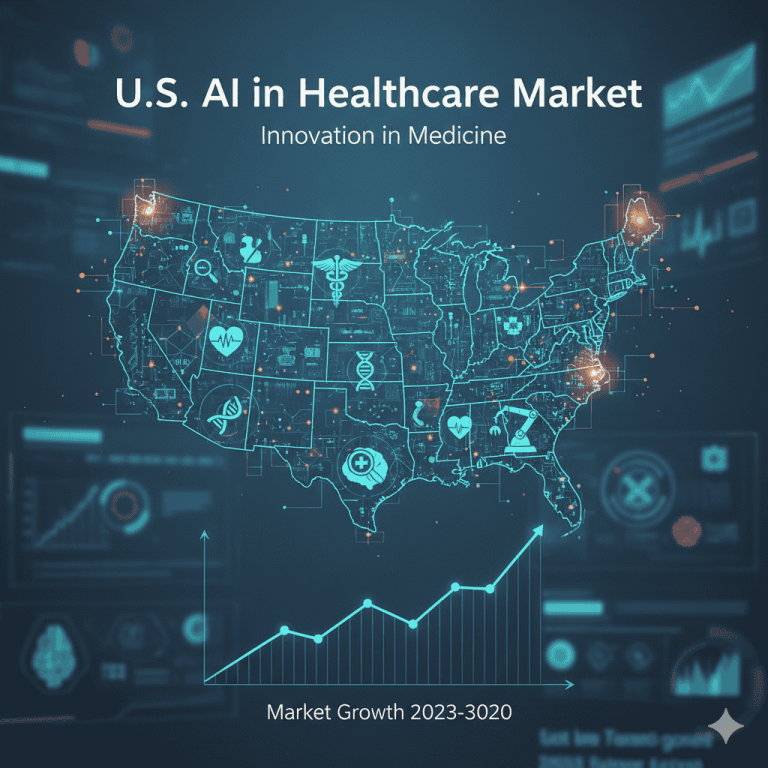U.S. Oncology Pharmaceutical Market Poised for $100B+ Growth with Precision Medicine

The U.S. oncology pharmaceutical market is poised for substantial growth, projected to generate hundreds of millions in revenue from 2025 to 2034, driven by rising cancer incidences, rapid technological advancements, increased R&D investment, growing demand for personalized therapies, AI-driven drug development, and expansion of distribution channels, including hospitals and online pharmacies.
Download the free sample and get the complete insights and forecasts report on this market @ https://www.towardshealthcare.com/download-sample/5986
Table of Contents
ToggleMarket Size
Current Market Value (2024):
●The U.S. oncology pharmaceutical market is valued in the hundreds of millions in revenue.
●Targeted drugs and immunotherapies account for the largest revenue share due to higher efficacy and lower side effects.
●Hospital pharmacies dominate distribution due to high patient volumes requiring complex therapy administration.
Forecasted Growth (2025–2034):
●Expected CAGR reflects strong growth driven by technological innovations and AI adoption.
●Market potential increases due to precision medicine and personalized therapies.
●New cancer therapies, like antibody-drug conjugates (ADCs) and CAR-T, are expected to contribute significantly.
Revenue Drivers:
●Expanding oncology-focused R&D facilities and investments (e.g., AstraZeneca $50B Virginia facility).
●Strategic collaborations and commercialization agreements like Phyrago by Cycle Pharmaceuticals.
●Rising incidence of common cancers, such as breast and lung cancers, boosts therapy adoption.
Therapy-Specific Growth:
●Targeted Therapy: Dominates due to high specificity, improved patient outcomes, and personalized application.
●Immunotherapy: Fastest-growing due to enhanced duration of action and potential to combine with other therapies.
●Chemotherapy: Remains significant but growth is slowing due to high toxicity and advent of precision medicines.
Drug Class Impact:
●Targeted Drugs: Includes monoclonal antibodies and small molecule inhibitors; high efficacy and low systemic toxicity.
●Cytotoxic Drugs: Broadly used but limited by severe side effects; mostly older-generation therapies.
●Hormonal Drugs: Effective for hormone-sensitive cancers (breast, prostate); smaller market share.
Indication-Wise Market Share:
●Breast Cancer: High incidence in the U.S., leading to dominant market share; strong screening programs enhance early detection.
●Lung Cancer: Fastest-growing segment; rising prevalence in smokers and non-smokers drives demand for novel therapies.
●Other Indications: Colorectal, prostate, and stomach cancers show moderate but steady growth due to targeted therapy expansion.
Dosage Forms:
●Injectables: Dominant due to high bioavailability, rapid onset of action, and suitability for complex therapies.
●Solid Dosage Forms (Tablets/Capsules): Preferred for outpatient convenience but less effective for complex biologics.
Liquids: Specialized patient groups (pediatrics or elderly) adopt liquid forms; smaller market share.
●Distribution Channels:
●Hospital Pharmacies: Lead in revenue due to capacity to handle high-volume and complex oncology therapies.
●Retail Pharmacies: Moderate growth; used for oral and simpler injectable therapies.
●Online Pharmacies: Fastest-growing segment due to telemedicine integration, convenience, and home delivery access.
Market Trends
Rising Investments in Oncology:
●AstraZeneca’s $50B Virginia facility to develop oncology and respiratory drugs.
●Piramal Pharma’s $90M U.S. investment in ADC therapies and sterile injectables.
●Investments fund advanced manufacturing, AI integration, and high-skilled workforce development.
Collaborations & Partnerships:
●Cycle Pharmaceuticals’ Phyrago commercialization agreement with Handa Therapeutics.
●Partnerships accelerate regulatory approvals, product launches, and market penetration.
AI Integration in R&D:
●Enhances drug discovery by analyzing large chemical and biological datasets.
●Improves predictive modeling of tumor response and patient stratification.
Demand for Precision Medicines:
●Genomic testing identifies patient-specific targets for therapy.
●Personalized therapies improve efficacy, reduce side effects, and increase adoption.
Expansion of Facilities & Manufacturing:
●New oncology production units and labs accommodate growing drug demand.
●AI-assisted automation improves manufacturing precision and efficiency.
Government & Regulatory Support:
●Fast-track FDA approvals encourage rapid commercialization of innovative therapies.
●Funding programs promote development of rare or difficult-to-treat cancer therapies.
Rising Awareness & Screening Programs:
●Breast cancer awareness and early detection programs increase therapy adoption.
●Public health initiatives promote early-stage treatment and market growth.
Telemedicine & Online Pharmacy Expansion:
●Home delivery and remote consultations enhance patient access.
●Online platforms reduce geographical and logistical barriers.
Combination Therapy Growth:
●Immunotherapy combined with targeted therapy provides enhanced efficacy.
●Personalized regimens increase patient survival and treatment outcomes.
Next-Generation Therapy Focus:
●ADCs, CAR-T therapies, and molecular-targeted drugs show strong pipeline growth.
●Companies focus on multi-cancer targeting and gene-editing approaches.
AI Impact / Role in the Market
Early Detection:
●AI analyzes imaging and non-imaging data (CT scans, MRIs) to detect tumors at early stages.
●Improves diagnostic accuracy, reducing misdiagnosis and late-stage treatment costs.
Accelerated Drug Discovery:
●Algorithms mine chemical and biological databases to identify promising compounds.
●Reduces time and costs associated with traditional lab experimentation.
Biomarker Identification:
●AI identifies molecular and genetic biomarkers for precision medicine.
●Facilitates development of targeted therapies for specific patient groups.
Patient Stratification for Trials:
●Machine learning predicts which patients will respond best to specific therapies.
●Optimizes inclusion criteria, reduces trial dropouts, and improves efficacy assessment.
Clinical Trial Design Optimization:
●AI predicts optimal dosing, schedule, and endpoints.
●Reduces duration and cost of Phase 1–3 trials while improving success rates.
Predictive Tumor Response Modeling:
●Models forecast individual tumor responses to therapies.
●Enables personalized treatment regimens and better patient outcomes.
Genomics & Precision Matching:
●AI aligns genetic mutation profiles with specific drugs.
●Improves treatment efficacy and reduces adverse events.
Automation in Manufacturing:
●AI-powered robotics streamline production of injectables and biologics.
●Minimizes errors, ensures consistent quality, and scales production efficiently.
Data Integration & Decision Support:
●Combines clinical, genomic, and imaging datasets to recommend therapy options.
●Supports clinicians in making data-driven treatment decisions.
Post-Marketing Surveillance:
●AI monitors real-world patient outcomes and adverse effects.
●Guides regulatory compliance and informs future drug improvements.
Market Dynamics – U.S. Oncology Pharmaceutical Market
A. Drivers
1. Rising Demand for Precision Medications
Targeted Therapies:
●Mechanism: Designed to specifically target cancer cells based on genetic mutations, receptor expressions, or molecular pathways, minimizing harm to healthy tissues.
●Impact: Higher efficacy, reduced systemic toxicity, and better patient tolerability increase adoption rates.
●Example: Drugs like Herceptin for HER2-positive breast cancer or Tagrisso for EGFR-mutated NSCLC.
Combination Therapies:
●Rationale: Combining targeted therapy with immunotherapy, chemotherapy, or hormonal therapy enhances synergistic effects.
●Outcome: Improves patient survival, reduces cancer recurrence, and broadens treatment applicability across diverse patient populations.
●Strategic Effect: Encourages hospitals and oncology centers to adopt comprehensive treatment regimens, increasing market demand.
Personalization & Genomic Testing:
●Implementation: Genomic profiling of tumors guides drug selection and dosing.
●Benefit: Reduces trial-and-error prescribing, optimizes therapeutic outcomes, and supports the growing trend toward individualized treatment plans.
2. Technological Advancements
AI Integration in Drug Discovery & Development:
●Role: AI algorithms analyze chemical, biological, imaging, and clinical datasets to identify new drug candidates faster.
●Benefit: Reduces preclinical and clinical trial timelines, lowers R&D costs, and increases probability of success.
●Example: Predictive Oncology’s AI-driven models for tumor response prediction.
Automation in Manufacturing:
●Implementation: Robotics and AI-assisted systems in drug production improve precision, consistency, and scale-up of biologics, CAR-T, and ADC therapies.
●Outcome: Ensures faster market availability, reduces human error, and maintains regulatory compliance.
Clinical Trial Optimization:
●Role: AI predicts optimal patient cohorts, dosing schedules, and endpoints.
●Benefit: Accelerates trial completion and reduces operational costs.
3. Increased Cancer Incidence
Rising Prevalence of Key Cancers:
●Breast and lung cancers are the most prevalent and continue to increase in the U.S., driving oncology therapy demand.
●Rare cancers and hematological malignancies also see incremental growth, expanding treatment needs.
Market Impact:
●Hospitals, specialty pharmacies, and oncology centers experience higher patient inflow.
●Pharmaceutical companies respond with new targeted therapies and combination regimens.
Early Detection & Screening Programs:
●Screening programs for breast cancer, lung cancer (LDCT scans), and colon cancer increase diagnosis rates.
●This raises immediate demand for effective therapeutics, particularly targeted therapies and injectables.
B. Restraints
1. High Cost of Treatments
Expensive Oncology Drugs:
●Biologics, CAR-T therapies, and antibody-drug conjugates (ADCs) are highly costly due to complex R&D and manufacturing processes.
●Average treatment costs for advanced therapies can reach hundreds of thousands of dollars per patient annually.
Impact on Market:
●Limits access for uninsured or underinsured patients.
●Reduces adoption rates in small hospitals or clinics with budget constraints.
Mitigation Challenges:
●Rebates, insurance coverage, and patient assistance programs can only partially offset high costs.
2. Delayed Reimbursements
Hospital & Insurance Barriers:
●Oncology drugs often require prior authorization and reimbursement approvals, delaying treatment initiation.
●Administrative hurdles reduce reliance on cutting-edge therapies by smaller hospitals and clinics.
Market Implication:
●Delayed adoption slows overall revenue growth despite high patient need.
●Incentivizes pharma companies to negotiate innovative payment models (e.g., outcomes-based pricing).
C. Opportunities
1. Advancing Cancer Drug Development
Next-Generation Therapeutics:
●Innovations in molecular biology, genomics, and gene-editing platforms (CRISPR, TALEN) enable development of personalized and precision therapies.
●Example: CAR-T therapies for hematologic malignancies and ADCs for targeted solid tumor therapy.
Multi-Cancer Targeting Drugs:
●Emerging drugs aim to target multiple cancer types simultaneously or across heterogeneous patient populations.
●Improves ROI for pharmaceutical companies and expands treatment applicability.
Emergence of Novel Biologics & Platforms:
●Bispecific antibodies, immune checkpoint modulators, and tumor microenvironment modulators are gaining attention.
●These drugs address previously untreatable or refractory cancer types.
Clinical & Regulatory Support:
●FDA fast-track programs, orphan drug designations, and breakthrough therapy approvals create an accelerated pathway for innovative oncology drugs.
●Encourages companies to invest in research and development for rare or difficult-to-treat cancers.
Integration with AI for R&D:
●AI-driven predictive models and simulations enable more efficient target identification, compound screening, and trial design.
●Leads to faster drug discovery and lower failure rates.
Combination Therapy Expansion:
●Opportunities exist in pairing targeted therapies with immunotherapies or existing chemotherapies to enhance efficacy.
●Reduces treatment resistance and increases patient survival.
Global Market Expansion Potential:
●Although focused on the U.S., technologies and therapies developed domestically can be adapted for international markets.
●Drives investment and broader revenue potential.
Patient-Centric Therapy Development:
●Emerging focus on therapies that reduce side effects and improve quality of life, increasing patient compliance and adoption.
Collaborative Research:
●Academia-industry partnerships accelerate innovation and provide access to clinical trial networks.
●Reduces cost and risk of developing next-gen therapies.
Regional Insights
Innovation Hubs:
●U.S. hosts top biotech clusters (Boston, San Francisco, New Jersey).
●Accelerates development of next-gen therapies like CAR-T and ADCs.
Government Support:
●Funding and grants for oncology R&D reduce financial barriers.
●Supports rare cancer drug development and accelerates FDA approvals.
Advanced Healthcare Infrastructure:
●High availability of hospital pharmacies ensures efficient administration of complex therapies.
●Supports large-scale trials and therapy adoption.
Academic & Industry Collaboration:
●Universities partner with pharma companies for AI-driven oncology research.
●Example: Predictive Oncology developing tumor response models.
Telemedicine & Online Pharmacy Penetration:
●Remote areas access injectables and personalized therapies.
●Online platforms reduce delays, improve adherence, and enhance patient convenience.
Top 10 Companies

1. Roche (incl. Genentech)
●Overview: Roche is a leading biotechnology and pharmaceutical company with strong oncology presence through Genentech. Known for integrating diagnostics with therapeutics (theranostics).
●Products: Herceptin (breast cancer), Avastin (multiple solid tumors).
Strengths:
●Leadership in targeted therapy and biologics.
●Strong R&D pipelines focused on monoclonal antibodies and combination therapies.
●Advanced diagnostic platforms enable patient stratification for personalized medicine.
●Competitive Edge: High efficacy drugs with minimal systemic toxicity.
2. Merck & Co.
●Overview: Major global pharmaceutical company focusing on oncology immunotherapy.
●Products: Keytruda (pembrolizumab) – a leading PD-1 checkpoint inhibitor.
Strengths:
●Expertise in immuno-oncology and checkpoint inhibition.
●Broad portfolio targeting multiple cancer types (melanoma, NSCLC, head & neck).
●Strong clinical trial infrastructure with global reach.
3. Bristol-Myers Squibb (BMS)
●Overview: Pioneer in immuno-oncology, with a focus on developing next-generation cancer therapies.
●Products: Opdivo (nivolumab), Yervoy (ipilimumab).
Strengths:
●Expertise in combination immunotherapies.
●Strong pipeline of immune checkpoint inhibitors and CAR-T therapies.
●Advanced research in precision medicine and personalized oncology approaches.
4. Johnson & Johnson (J&J)
●Overview: Diversified healthcare giant with oncology products across multiple drug classes.
●Products: Darzalex (multiple myeloma), Imbruvica (blood cancers).
Strengths:
●Broad oncology pipeline covering hematological and solid tumors.
●Strong manufacturing capabilities and distribution network.
●Innovative approaches in combination therapies and biologics.
5. AstraZeneca
●Overview: Global biopharmaceutical company focused on precision oncology.
●Products: Tagrisso (EGFR-mutated NSCLC), Lynparza (PARP inhibitor for ovarian/breast cancer).
Strengths:
●Strong R&D and AI integration for drug development.
●Leadership in targeted therapies for hard-to-treat cancers.
●Active investment in ADCs and precision medicine.
6. Novartis
●Overview: Global leader in CAR-T and gene-based oncology therapies.
●Products: Kymriah (CAR-T therapy for blood cancers).
Strengths:
●Leader in cellular therapy and gene-editing oncology platforms.
●High global market presence and adoption in advanced therapy programs.
●Strong partnerships with academic institutions for translational research.
7. Pfizer
●Overview: Major pharmaceutical company with significant oncology portfolio.
●Products: Ibrance (breast cancer), Inlyta (renal cell carcinoma).
Strengths:
●Focused on targeted and precision medicines.
●Integration of AI and digital tools in drug development.
●Broad distribution network across hospitals and pharmacies.
8. Amgen
●Overview: Biotechnology company specializing in biologics and antibody-based therapies.
●Products: Blincyto (blinatumomab), Kyprolis (carfilzomib).
Strengths:
●Expertise in bispecific antibodies and immunotherapy.
●Strong biologics manufacturing capabilities.
●Pipeline includes hematologic and solid tumor therapies.
9. Eli Lilly
●Overview: Global pharmaceutical company with a growing oncology presence.
●Products: Cyramza (gastric cancer), Verzenio (breast cancer).
Strengths:
●Strong oncology portfolio with global reach.
●Focus on targeted and combination therapies.
●Investments in AI-driven discovery platforms.
10. AbbVie
●Overview: Biopharma company with focus on immuno-oncology and combination therapies.
●Products: Imbruvica (blood cancers), Venclexta (leukemia).
Strengths:
●Expertise in combination and targeted therapies.
●Strong R&D in rare cancers.
●Expanding presence in precision oncology and biologics.
Latest Announcements
Predictive Oncology (May 2025):
●AI-enabled drug discovery achieved predictive tumor response models for 21 new molecules.
●Focused on breast, ovarian, and colon cancers.
●Significance: Accelerates preclinical validation, reduces R&D costs, and improves likelihood of successful clinical trials.
Cycle Pharmaceuticals & Handa Therapeutics (July 2025):
●U.S. commercialization of Phyrago for Philadelphia chromosome-positive leukemias.
●FDA-approved drug for CML and ALL.
●Significance: Fills treatment gaps for rare leukemia subtypes; strengthens company presence in U.S. oncology market.
Recent Developments
Lantern Pharma (July 2025):
Completion of Phase 2 HARMONIC™ clinical trial in Japan for NSCLC using AI-guided therapies.
Evaluated LP-300 with pemetrexed and carboplatin.
Significance: Validates AI-driven approach for clinical trial design and targeted therapy.
CNSide Diagnostics (July 2025):
Developed and commercialized CSF assay platform in Texas to treat leptomeningeal metastases.
Focus on National Cancer Institute (NCI) Designated Cancer Centers.
Significance: Provides precise diagnostic support for high-risk cancer patients.
Facility Expansion & Investments:
AstraZeneca $50B facility (Virginia): Oncology and respiratory drug manufacturing with AI & automation.
Piramal Pharma $90M ADC expansion: Enhances antibody-drug conjugate and sterile injectable production.
Significance: Expands manufacturing capacity and speeds drug availability in U.S. market.
Segments Covered
A. By Drug Class
1. Cytotoxic Drugs
Types: Alkylating agents, antimetabolites, anthracyclines, and plant alkaloids.
Mechanism: These drugs interfere with cell division, damaging DNA or inhibiting DNA synthesis to kill rapidly dividing cancer cells.
Applications:
Widely used in breast, lung, colorectal, and hematologic cancers.
Often first-line treatment for aggressive or late-stage cancers.
Limitations:
High systemic toxicity leading to side effects like nausea, hair loss, immunosuppression, and organ toxicity.
Narrow therapeutic window limits dose escalation.
Strategic Insight:
Cytotoxic drugs remain relevant for combination therapy with targeted or immunotherapy drugs.
Pharmaceutical companies are developing modified delivery systems (liposomal formulations) to reduce toxicity and improve patient compliance.
2. Targeted Drugs
Types: Monoclonal antibodies (mAbs), tyrosine kinase inhibitors (TKIs), PARP inhibitors, and antibody-drug conjugates (ADCs).
Mechanism: Specifically target cancer cell receptors, enzymes, or signaling pathways while sparing healthy cells.
Applications:
HER2-positive breast cancer (Herceptin), EGFR-mutated NSCLC (Tagrisso), ovarian cancer (Lynparza).
Advantages:
Minimal systemic toxicity compared to cytotoxic drugs.
High adoption for personalized medicine, often guided by genetic profiling.
Strategic Insight:
Targeted therapies are increasingly combined with immunotherapies to enhance efficacy.
Growing emphasis on biomarker-driven patient selection improves market penetration and patient outcomes.
3. Hormonal Drugs
Types: Selective estrogen receptor modulators (SERMs), aromatase inhibitors, androgen receptor blockers.
Applications:
Breast cancer (estrogen receptor-positive), prostate cancer (androgen receptor-positive).
Advantages:
Lower toxicity than traditional cytotoxic drugs.
Often used in combination with targeted therapies to enhance efficacy.
Market Insight:
Smaller revenue contribution but critical for long-term disease management.
Increasing adoption of combination therapy regimens expands market potential.
B. By Therapy Type
1. Chemotherapy
Overview: Broad-spectrum, cytotoxic therapy targeting rapidly dividing cells.
Applications: First-line treatment in many solid tumors and hematologic malignancies.
Challenges:
High systemic toxicity reduces adoption compared to targeted therapies.
Often requires hospital administration due to side-effect monitoring.
Strategic Insight:
Chemotherapy remains part of combination regimens with immunotherapy or targeted therapy.
Innovations in delivery systems (nanoparticles, liposomes) improve safety and efficacy.
2. Targeted Therapy
Overview: Precision therapies aimed at specific molecular or genetic targets.
Applications: Breast, lung, ovarian, and rare cancers.
Advantages:
High efficacy and patient specificity.
Reduced side effects compared to traditional chemotherapy.
Combination potential with immunotherapies.
Strategic Insight:
Rapidly growing segment due to precision medicine adoption.
AI-driven biomarker identification enhances drug development and patient matching.
3. Immunotherapy
Overview: Harnesses the body’s immune system to target and destroy cancer cells.
Types: Checkpoint inhibitors (PD-1/PD-L1, CTLA-4), CAR-T therapies, bispecific antibodies, cytokine therapies.
Applications: Lung, breast, melanoma, blood cancers.
Advantages:
Longer duration of action.
Can be combined with chemotherapy or targeted therapy for synergistic effects.
Strategic Insight:
Fastest-growing therapy segment due to its potential for durable remission.
Personalized immunotherapy approaches are increasing adoption and market value.
C. By Indication
1. Breast Cancer
Market Leadership: Dominates due to high prevalence and advanced screening programs.
Drivers:
Early detection increases therapy adoption.
Key therapies: Herceptin, Ibrance, Lynparza.
Strategic Insight:
Combination regimens and targeted therapies enhance patient survival rates.
Continued R&D in ADCs and PARP inhibitors expands treatment options.
2. Lung Cancer
Fastest-Growing Segment: Rising incidence among smokers and non-smokers.
Emerging Therapies: Tagrisso, checkpoint inhibitors, combination regimens.
Strategic Insight:
Personalized medicine approaches (EGFR, ALK, ROS1 mutation targeting) are driving market growth.
AI-assisted diagnostics improve early detection and treatment stratification.
3. Other Cancers
Applications: Colorectal, prostate, stomach, pancreatic, and rare cancers.
Trends:
Personalized therapies and combination regimens are increasingly adopted.
Market growth fueled by rare cancer-focused R&D and orphan drug designations.
Strategic Insight:
Emerging biologics, bispecific antibodies, and ADCs are expanding therapeutic options.
D. By Dosage Form
1. Injectables
Overview: Includes prefilled syringes, vials, and complex biologic formulations.
Applications: CAR-T therapy, ADCs, immunotherapy agents.
Advantages:
High bioavailability and rapid onset of action.
Suitable for hospital-administered complex therapies.
Strategic Insight:
Dominant in hospital settings due to complexity of administration and monitoring.
Future growth driven by next-gen biologics and combination therapy injectables.
2. Solid & Liquid Forms
Overview: Tablets, capsules, oral liquids for home or outpatient use.
Advantages: Convenience for patients; easier integration into telemedicine or remote care.
Strategic Insight:
Growing segment due to preference for self-administered therapies and improved patient adherence.
Combination with AI-assisted patient monitoring enhances treatment effectiveness.
E. By Distribution Channel
1. Hospital Pharmacies
Overview: Largest share of the market due to patient volume and complexity of therapy.
Advantages:
Handles injectables, complex combination therapies, and biologics.
Provides professional monitoring and administration support.
Strategic Insight:
Hospitals remain central to adoption of advanced therapies, including CAR-T and ADCs.
Integration with AI-driven patient data supports treatment optimization.
2. Online Pharmacies
Overview: Fastest-growing channel due to telemedicine adoption and home delivery.
Advantages:
Increased accessibility for patients in remote or underserved areas.
Convenience improves adherence and follow-up.
Strategic Insight:
Growth accelerated by telehealth platforms and patient-centric service models.
Supports chronic and maintenance therapy distribution for oral targeted drugs.
10. Top 5 FAQs
1 What is driving the growth of the U.S. oncology pharmaceutical market?
Rising cancer incidence, AI integration, precision medicines, and increased R&D investments.
2 Which therapy segments dominate and are growing fastest?
Dominant: Targeted therapy; Fastest-growing: Immunotherapy.
3 Which cancer indications lead in market share?
Dominant: Breast cancer; Fastest-growing: Lung cancer.
4 How is AI transforming oncology drug development?
AI accelerates drug discovery, optimizes clinical trials, identifies biomarkers, and predicts tumor response.
5 What are the top companies and their key strengths?
Roche, Merck, BMS, J&J, AstraZeneca, Novartis, Pfizer, Amgen, Eli Lilly, AbbVie; strengths include targeted therapies, immunotherapy, CAR-T, and AI integration.
Access our exclusive, data-rich dashboard dedicated to the therapeutic area sector – built specifically for decision-makers, strategists, and industry leaders. The dashboard features comprehensive statistical data, segment-wise market breakdowns, regional performance shares, detailed company profiles, annual updates, and much more. From market sizing to competitive intelligence, this powerful tool is one-stop solution to your gateway.
Access the Dashboard: https://www.towardshealthcare.com/access-dashboard
Immediate Delivery Available | Buy This Premium Research @
Become a valued research partner with us – https://www.towardshealthcare.com/schedule-meeting
You can place an order or ask any questions, please feel free to contact us at sales@towardshealthcare.com
Powering Healthcare Leaders with Real-Time Insights: https://www.towardshealthcare.com/healthcare-intelligence-platform
Europe Region – +44 778 256 0738
North America Region – +1 8044 4193 44
APAC Region: +91 9356 9282 04
Web: https://www.towardshealthcare.com
Find us on social platforms: LinkedIn | Twitter | Instagram | Medium | Pinterest




